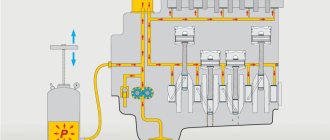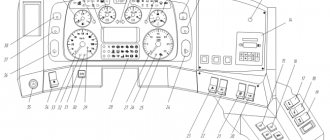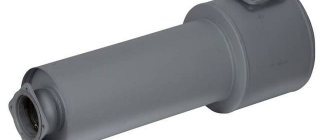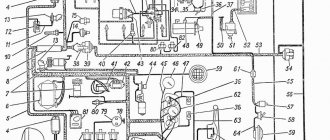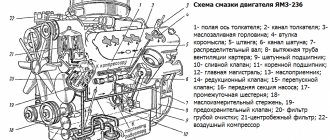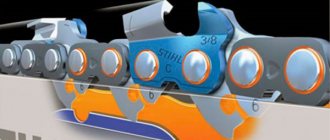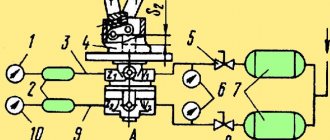Engine MMZ D-260
In general, six-cylinder engines are better balanced than four-cylinder engines, are smoother and produce less vibration. At the same time, they require more time to manufacture and maintain, are more expensive and are not as compact as their predecessors.
Description
D-260 is an in-line engine, i.e. the cylinders are arranged in a row and have a common crankshaft. This configuration is considered balanced : the inertial forces cancel each other out, which gives smooth piston movement and low vibration levels. Vibration is possible at low idle speeds.
The engine is equipped with starters, generators and turbochargers made in Belarus and Czech fuel pumps. The optimal ratio of domestic and foreign parts ensures a balance of price and quality.
The engine is installed on various special equipment
Modifications
Currently, MMZ produces modifications of the D-260 in more than forty variants, which almost completely covers the needs of manufacturers of tractors and special equipment. They are installed on grain and forage harvesters, loaders and some bus models. There were attempts to also equip long-range vehicles, but in this area the engines did not perform very well. But for the construction, road and agricultural sectors, the technical characteristics of the D 260 are ideal. Buyers note high engine power, long service life and unpretentiousness.
Be sure to read: Technical characteristics of Tatra 148
Not available:
| № | Part code | Name | Part Information |
| 260-1011010 | Pump with oil receiver | Quantity for D-260.4 1 Model 260 Group Engine Subgroup Oil pump Part serial number 010 | Not available |
| 260-1010002 | bracket | Quantity for D-260.4 1 Model 260 Group Engine Subgroup Oil receiver Part serial number 002 | Not available |
| 260-1011021 | Drive gear | Quantity for D-260.4 1 Model 260 Group Engine Subgroup Oil pump Part serial number 021 | Not available |
| 260-1011022 | Roller | Quantity for D-260.4 1 Model 260 Group Engine Subgroup Oil pump Part serial number 022 | Not available |
| 260-1011023 | Finger | Quantity for D-260.4 1 Model 260 Group Engine Subgroup Oil pump Part serial number 023 | Not available |
| 260-1011024 | Washer | Quantity for D-260.4 1 Model 260 Group Engine Subgroup Oil pump Part serial number 024 | Not available |
| 260-1011030 | Pump housing | Quantity for D-260.4 1 Model 260 Group Engine Subgroup Oil pump Part serial number 030 | Not available |
| 260-1011040 | Driven gear | Quantity for D-260.4 1 Model 260 Group Engine Subgroup Oil pump Part serial number 040 | Not available |
| 260-1011044 | Sleeve | Quantity for D-260.4 1 Model 260 Group Engine Subgroup Oil pump Part serial number 044 | Not available |
| 260-1013024 | Pin | Quantity for D-260.4 2 Model 260 Group Engine Subgroup Oil radiator Part serial number 024 | Not available |
| 260-1017017 | Valve | Quantity for D-260.4 1 Model 260 Group Engine Subgroup Centrifugal oil filter Part serial number 017 | Not available |
| 240-1403155 | Lid | Quantity for D-260.4 1 Model 240 Group Electronic engine control system Subgroup 1403 Part number 155 | Not available |
| 240-1403228 | Drive gear | Quantity for D-260.4 1 Model 240 Group Electronic engine control system Subgroup 1403 Part number 228 | Not available |
| 50-1403233 | Dowel pin | Quantity for D-260.4 2 Model 50 Group Electronic engine control system Subgroup 1403 Part number 233 | Not available |
| 50-1404075 | Cork | Quantity for D-260.4 1 Model 50 Group Electronic engine control system Subgroup 1404 Part number 075 | Not available |
| 50-1404081-A | Valve spring | Quantity per D-260.4 1 Model 50 Group Electronic engine control system Subgroup 1404 Serial part number 081 Additionally Interchangeable with a part previously released under the same number | Not available |
| 020-025-30-2-5 | Ring | Quantity per D-260.4 1 | Not available |
| 2-KG1/4″10kp-019 | Cork | Quantity per D-260.4 1 | Not available |
| 2-KG3/8″10kp-019 | Cork | Quantity per D-260.4 1 | Not available |
| А57-03-026А | Sleeve | Quantity per D-260.4 1 | Not available |
| A57-03-027A | Sleeve | Quantity per D-260.4 1 | Not available |
| М8-6gх16-88-35-016 | Bolt | Quantity for D-260.4 2 | Not available |
| М8-6gх55-88-35-016 | Bolt | Quantity for D-260.4 6 | Not available |
| М12-6gх60-88-35-016 | Bolt | Quantity for D-260.4 2 | Not available |
| М8-6Н6 | screw | Quantity for D-260.4 2 | Not available |
| 5-01-08kp-019 | Washer | Quantity per D-260.4 3 Note 5 | Not available |
| 865G-016 | Washer | Quantity on D-260.4 4 | Not available |
| 8T-65G-06 | Washer | Quantity for D-260.4 6 | Not available |
| 8-01-08kp-019 | Washer | Quantity for D-260.4 2 | Not available |
Unit technical characteristics
The characteristics are as follows:
- The number of cylinders is six.
- The location is in a row.
- The operating order of the cylinders is 1-5-3-6-2-4.
- Cylinder diameter – 110 mm.
- The piston stroke is 125 mm.
Dimensions:
- length - 1300 mm;
- width - 705 mm;
- height - 1118 mm.
- weight - 710 kg.
Other parameters:
- Volume – 7.12 liters.
- Fuel consumption – 162 g/l.h.h.
- Power – 155 hp.
- Rotation speed - 2100 rpm, idling - 850-2260 rpm.
- Maximum torque – 622 N.m (63.4 kgf.m).
- Compression ratio – 16.
Replacing the oil pump: is it possible to install another model?
The oil pump of the MTZ 80 tractor, especially if we are talking about old Belarusians with D-240, may not cope with the load, so many tractor drivers have a question: is it possible to replace the pump with another model? For example, installing a pump with drive gears with fewer teeth would result in an increase in revolutions.
Replacing the oil pump does not necessarily have to be done with a unit of the same model. It usually makes sense for the D-240 (and sometimes later versions D-241, D-242, D-243, etc.) to install a more powerful oil pump from the D-245.
To ensure minimal modifications are required during replacement, you need to replace the pump and the crankshaft gear at the same time.
All other dimensions will be identical, so there will be no problems connecting the oil intake and pipes.
To successfully replace the MTZ oil pump, if you want to replace it with a similar one, you need to:
- clarify the modification of the engine and look at the catalog number;
- see how many teeth there are on the drive gear;
- select spare parts with the same catalog numbers (be sure to check the number of teeth on the drive gear, otherwise the parts will not fit).
To replace the oil pump with a different version you need:
- select an oil pump for MTZ with suitable characteristics;
- specify how many teeth there are on the drive gear;
- if the number of teeth matches the number of teeth on the crankshaft gear, then you can only take the pump, otherwise, for a successful replacement, you must also order a shaft gear suitable for it.
Device D-260
The structural basis of the engine is a cast iron cylinder block. Attachment to the vehicle is carried out from the rear end; the shield and distribution cover are located at the front. The gasket between the block and the head is made of asbestos-free fabric. The block heads are interchangeable. The tightening torques of the fastening bolts are 190–210 Nm. The valve mechanism is closed with caps. The valves are adjusted using a special device.
Fuel supply system
The crankshaft rests on the side walls and internal partitions. Torque is transmitted to the camshaft via distribution gears. The camshaft has four fulcrum points. The camshaft cams are installed at an angle, due to which the tappets rotate. The pistons are made of aluminum alloy; the combustion chamber of the fuel-air mixture is located in the bottom. Compression and oil rings are installed on the top of the pistons.
The lubrication system is a system of longitudinal and transverse channels through which oil is supplied to the bearings, camshaft and injectors. The oil sump is located at the bottom. Coolant circulates between the walls of the MMZ D-260 cylinder block and the liners. The system is closed type, circulation is provided by a centrifugal pump. The system includes a remote thermometer, a warning light and two thermostats.
Fuel supply is provided by Yaroslavl-made fuel pumps (high pressure). The six-section pump ensures precise dosage of fuel into each cylinder at optimal pressure. The pressure is regulated by a bypass valve. It is possible to manually remove air from the system using a special pump. The fuel goes through two stages of purification - coarse and fine. The air is purified in three stages: a monocyclone and two paper filters. The engine is equipped with a turbocharger consisting of a centripetal radial turbine and a centrifugal single-stage compressor. The energy of exhaust gases is used to supply air to the cylinders.
Be sure to read: Technical characteristics of the IFA-25 multicar
Changing the engine oil
The oil in a gasoline engine must be changed every 15,000 km. If the car's mileage is low, change the oil once a year. At the same time, replace the oil filter element.
For a diesel engine, change the oil and filter element every 7,500 km.
Under severe operating conditions, such as short trips, frequent cold starts and heavy dust, the engine oil and oil filter should be changed at shorter intervals.
Attention: In any case, old oil must be handed over to special waste oil collection points. Oil sales points accept the appropriate amount of old oil free of charge, so when purchasing oil you must keep the receipt and canister for subsequent return of old oil! In addition, the administration of districts and cities informs about the location of the nearest waste oil collection point. Under no circumstances should old oil simply be drained or thrown away with household waste.
Features of in-line and overhaul repairs
Repairing the D-260 engine is a whole range of operations to restore the engine’s performance, which is not recommended to be done with your own hands. So, it’s worth turning to professionals who can correctly diagnose faults and wear, as well as which internal element needs to be replaced.
D260 engine after major overhaul
Let's consider the main set of operations that are carried out for the D-260 engine in order to carry out a major overhaul of the engine:
- Superficial diagnostics of faults is carried out by ear. The mechanic determines the presence of extraneous noise, as well as the preliminary location.
- Removing the engine from the car, as well as completely disassembling the power unit.
- Measurements of cylinders and crankshaft. Determining the repair number, as well as ordering spare parts. As practice shows, in most cases, in order not to bore the engine cylinders, the block is sleeved. This parameter allows, in case of subsequent repairs, to bore not the block, but the sleeves, which, when worn, can be removed and new ones inserted.
- Cylinder head repair.
- Assembly of the power unit.
High pressure fuel pump from D260 engine
A separate parameter is the restoration of the injection pump. As practice shows, the technician repairs only the plunger pair, which wears out most often.
As for on-line repair operations, every owner of a car with a D260 engine has sufficient skills and knowledge to restore their engine themselves, the main thing is that the hand grows from the right place. The most common problems include:
- Starter and generator malfunction.
- Failure of the water pump.
- Replacing drive belts.
- Adjusting the valve mechanism.
- Change of oil.
- Replacing engine filters.
In-line repair of the D260 engine
Repair instructions for each unit are available on the Internet or you can use factory books that are publicly available.
Maintenance and oil change
The D-260 engine, in terms of maintenance, does not have significant differences from its younger brothers 240-245 models. Engine maintenance is carried out every 20-25 thousand kilometers.
Main elements of the D-260 engine
Scheduled maintenance of an internal combustion engine is a set of operations aimed at preserving the primary condition of the components and parts of the unit.
According to the repair and operation manual for the D series motor compiled by the manufacturer, we will consider what operations are included in the maintenance of the 260th:
- Change of oil.
- Adjusting the valve mechanism.
- Replacing filters. So, depending on the engine modification, the following filter elements may or may not be present: a fine and coarse oil filter, a filter element for coarse and fine fuel purification, an air filter, an eco-filter for exhaust.
- Cleaning the injectors.
- Adjustments related to the high pressure fuel pump.
- Other operations aimed at maintaining the power unit.
Servicing a high-pressure fuel pump is a separate set of operations that can only be done efficiently by specialists in the repair of fuel equipment for diesel engines.

